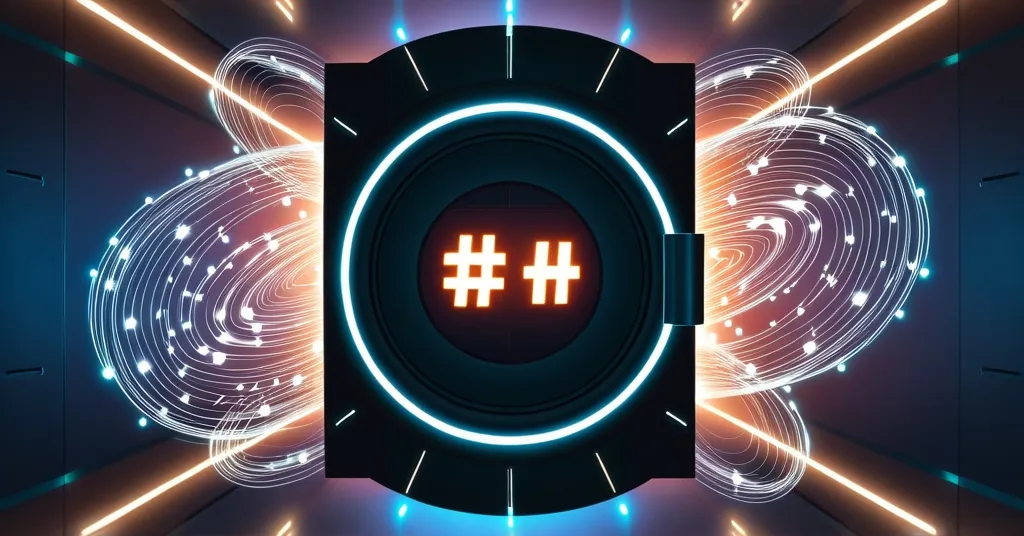Solana Introduces Quantum-Resistant Winternitz Vault for Enhanced Security

Solana Launches Quantum-Resistant Winternitz Vault for Enhanced Security
Solana has taken a significant step into the future of blockchain security with the launch of the Winternitz Vault on January 5, 2025. This feature aims to shield user funds from the potential threat of quantum computing, a technology that could disrupt current cryptographic systems.
- Quantum-Resistant Security
- Hash-Based Signature System
- Optional User Adoption
Quantum computing represents a futuristic leap in technology. Unlike traditional computers that use bits, quantum computers use qubits, which can exist in multiple states simultaneously. This allows them to perform complex calculations much faster, potentially breaking the cryptographic systems that protect our digital assets. If quantum computers are the boogeyman of crypto, Solana’s Winternitz Vault is the digital night light keeping your assets safe.
The Winternitz Vault is a quantum-resistant fortress, utilizing a hash-based signature method to generate fresh private keys for each transaction. Think of it as a Swiss bank account for the digital age, where the keys change with every transaction to keep your funds secure from future threats. The process involves creating a new Winternitz keypair and computing a Keccak256 Merkle root of the public key, which acts as a unique identifier to secure your transactions. Funds are transferred using a Winternitz signature, and any remaining funds return to a refund account, with the vault closing upon transaction completion.
While this sounds like something out of a sci-fi movie, the reality is that quantum computing threats are on the horizon. Solana’s proactive approach is commendable, but it’s worth noting that the feature is optional. Users must opt-in to use the Winternitz Vault, allowing those less concerned about future threats to continue as usual. However, for those who choose to embrace this cutting-edge security, the peace of mind could be well worth it.
The Winternitz Vault is not a magic bullet. It’s optional, and if you’re not careful, you might end up with a false sense of security. The complexity of quantum-resistant systems could be a hurdle for some users, and the optional nature of the Winternitz Vault might lead to a divide in the security levels of different users on the Solana network. Yet, it’s a bold move that pushes the boundaries of what’s possible in blockchain security.
This initiative by Solana echoes the broader crypto industry’s growing concern about quantum computing. Ethereum, another titan in the blockchain space, is also gearing up for quantum resistance. Vitalik Buterin, Ethereum’s co-founder, has estimated that significant quantum threats are at least a decade away. Yet, the race to future-proof blockchain security is on, and Solana is leading the charge.
The Winternitz Vault employs a hash-based signature system to generate new private keys for each transaction.
Solana’s initiative underscores the industry’s recognition of the need for forward-looking security solutions.
Vitalik Buterin, co-founder of Ethereum, believes that evident quantum threats are at least 10 years away.
From a Bitcoin maximalist viewpoint, the Winternitz Vault could be seen as a necessary evolution in blockchain security or as a distraction from Bitcoin’s core value proposition. While Bitcoin’s security remains robust, the need for quantum-resistant solutions is a reminder that the entire crypto ecosystem must innovate to stay secure.
Key Takeaways and Questions
-
What is the Winternitz Vault?
The Winternitz Vault is a quantum-resistant feature introduced by Solana that uses a hash-based signature system to generate new private keys for each transaction, enhancing security against potential quantum computing threats. -
How does the Winternitz Vault work?
It creates a new Winternitz keypair and computes the Keccak256 Merkle root of the public key. Funds are transferred using a Winternitz signature, and remaining funds return to a refund account, with the vault closing upon transaction completion. -
Is the Winternitz Vault mandatory for Solana users?
No, the Winternitz Vault is optional. Solana users must actively choose to store their assets in these quantum-resistant vaults. -
What are the broader industry implications of Solana’s Winternitz Vault?
The launch sets a benchmark for blockchain innovation and reflects the industry’s trend towards preparing for quantum computing threats, with other platforms like Ethereum also developing quantum-resistant measures. -
How far away are significant quantum computing threats according to experts?
Experts, including Ethereum co-founder Vitalik Buterin, estimate that evident quantum threats to current cryptographic systems are at least a decade away, with widespread access to quantum computing for everyday use potentially taking even longer.
As we stand on the brink of a quantum computing era, Solana’s Winternitz Vault offers a glimpse into the future of blockchain security. It’s a bold move that not only protects user assets but also pushes the entire industry to innovate and adapt. Whether you’re a Bitcoin maximalist or an altcoin enthusiast, the importance of staying ahead of the curve in security cannot be overstated. Let’s keep pushing the boundaries of what’s possible in the world of crypto, while never losing sight of the fundamentals that make this space so revolutionary.



